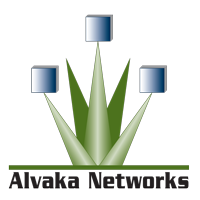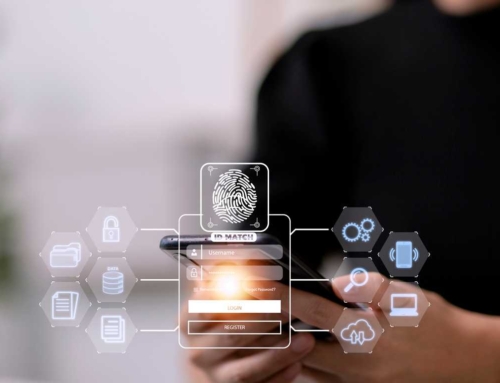How to Develop a Ransomware Risk Management Framework
Understanding the Threat: Why a Ransomware Risk Management Framework Is Essential
The ransomware risk management framework has emerged as a vital strategy for businesses of all sizes in the face of a mounting threat landscape. Ransomware attacks, which involve encrypting an organization’s data to extort money for its release, can have devastating effects on business continuity, financial stability, and reputation. As cybercriminals become more sophisticated, the urgency for companies to adopt a structured and strategic approach to manage this risk is paramount. At Alvaka, we prioritize the development of a comprehensive ransomware risk management framework to provide a proactive line of defense against such pervasive threats.
The Basics of a Ransomware Risk Management Framework
A ransomware risk management framework is essentially a comprehensive blueprint designed to protect digital assets from ransomware attacks. This framework includes key components such as risk identification, protection protocols, detection systems, response plans, and recovery strategies. By following a structured approach consistent with the guidelines provided by authorities like the National Institute of Standards and Technology (NIST), we empower businesses to enhance their security posture and resilience against ransomware incidents proactively. Our bespoke frameworks offer the clarity and direction necessary to safeguard valuable information and maintain operational integrity.
Key Considerations Before Building Your Framework
Before embarking on the development of a ransomware risk management framework, certain pivotal considerations must be acknowledged. For instance, we stress the need for executive leadership buy-in, which is crucial for aligning cybersecurity strategy with business objectives and ensuring adequate resource allocation. Additionally, we advocate for a thorough analysis of the current IT infrastructure and cybersecurity policies to identify existing deficiencies and opportunities for improvement. Importantly, we also focus on the central role of employee education and awareness, as empowering staff with knowledge is a critical step in mitigating the risks posed by ransomware.
Identifying and Assessing Ransomware Risks
In our pursuit of robust cybersecurity, we place significant emphasis on the establishment of a comprehensive ransomware risk management framework. In doing so, we start by meticulously identifying and assessing the various risks that ransomware poses to our operations. This process is fundamental, for it enables us to prioritize and address the most pressing vulnerabilities within our networks and systems. To efficiently identify these risks, we consider several critical aspects.
Conducting a Detailed Asset Inventory
Our initial step involves conducting a thorough inventory of all digital assets. This includes hardware, software, data repositories, and connected devices. It is essential to have a clear understanding of what is at stake and what needs protection. By mapping out these assets, we gain insight on potential entry points for ransomware and can take necessary precautions to shield them.
Evaluating Current Security Measures
We then evaluate our existing cybersecurity measures. Assessing the effectiveness of current security protocols and practices helps us to determine if they’re adequate or if enhancements are required. This review process often reveals areas where our defenses might be fortified to prevent successful ransomware attacks.
Identifying Vulnerabilities and Threat Exposure
Next, we focus on identifying potential vulnerabilities within our IT environment. Our specialists continuously monitor for any weaknesses that could be exploited by threat actors. We also analyze previous instances of ransomware incidents, both internal and external, to understand how our defenses might be bypassed and to learn from the experiences of others.
Understanding the Ransomware Threat Landscape
Keeping abreast of the evolving ransomware threat landscape is pivotal for us. We regularly gather intelligence on new strains of ransomware, attack methods, and threat actor behaviors. This ongoing research keeps our ransomware risk management framework adaptive and effective against current and emerging threats.
Guiding Through a Risk Assessment Process
- Reviewing Infrastructure: We scrutinize every layer of our IT infrastructure, from endpoints to servers, ensuring they’re not just up-to-date but fortified against intrusions.
- Analyzing Access Controls: Tightening access controls can significantly mitigate the risk of ransomware. We ensure that only authorized personnel have access to critical systems, following the principle of least privilege.
- Assessing Backup and Recovery Strategies: Our business continuity hinges on robust backup and disaster recovery strategies. By regularly testing these plans, we’re not just prepared for ransomware threats, but all manner of disruptions.
Crafting a ransomware risk management framework demands a meticulous approach to risk identification and assessment. By following these guiding steps, we equip ourselves with a deep understanding of our vulnerabilities and the means to address them. This proactive approach is key to defending our network and information systems from the devastating effects of ransomware attacks.
Did you know? The NIST Cybersecurity Framework is a globally recognized guide that helps organizations assess and manage their risk of ransomware, contributing to stronger resilience against cyber attacks.
Implementing Your Ransomware Risk Management Framework
At Alvaka, we understand that implementing a ransomware risk management framework is not a one-time event but a continuous journey towards cybersecurity resilience. After rigorous planning and preparation, the actual deployment of your framework must be carried out with precision and adaptability. Our team places strong emphasis on monitoring and maintaining the defense mechanisms, ensuring they evolve in tandem with emerging threats. We regularly review and test security measures to validate their effectiveness. This ongoing commitment lays the cornerstone of a robust defense against the looming threat of ransomware.
Maintaining and Updating Your Defenses
We believe that vigilance is key to retaining a resilient posture against ransomware. It is crucial to keep your defense systems up-to-date in response to the rapidly evolving attack methods. Our approach includes routine updates to security software, timely patches to vulnerabilities, and revisiting access controls and policies. At Alvaka, we also advocate for regular training and simulation exercises for staff, ensuring that awareness and response protocols are ingrained in your business culture. This dedication helps safeguard your digital landscape against the unpredictable nature of cyber threats.
Ensuring Effective Recovery and Response
Should a ransomware attack breach your defenses, an effective incident response and recovery plan is essential. Our comprehensive ransomware recovery strategy is designed to minimize downtime and restore operations swiftly. Using state-of-the-art solutions and best practices, we work diligently to mitigate the impact on your organization. Our recovery plan is not just a reactive measure—it is a means to reinforce your cybersecurity framework and foster resilience against future incidents.
Reflecting on the Journey: Strengthening Your Cybersecurity Posture
Constructing and implementing a ransomware risk management framework is a critical step in protecting your organization from the ramifications of a cyberattack. At Alvaka, our client’s security is our utmost priority. We leverage our expertise to not only erect but also maintain robust security measures, instill a culture of cyber awareness, and prepare you for effective recovery should an attack occur. The process is cyclical—a continuous loop of assessment, implementation, maintenance, and improvement. As your cybersecurity partner, Alvaka is dedicated to adapting our strategies for maximum protection, empowering your business to navigate the complexities of the digital world with confidence.
FAQ
What is a ransomware risk management framework? ▼
A ransomware risk management framework is a structured approach that outlines procedures and steps for detecting, preventing, and responding to ransomware attacks. The key components typically include risk identification, protection strategies, recovery planning, and continuous monitoring. This proactive method of defense is crucial for maintaining the integrity of our digital assets.
Why is it essential for businesses to implement a ransomware risk management framework? ▼
The landscape of cyber threats continues to evolve, with ransomware attacks becoming more frequent and sophisticated. They pose a substantial threat to business continuity, can inflict significant financial damage, and tarnish a company’s reputation. Implementing a framework is essential for companies of all sizes to protect themselves proactively against these crippling cyber crimes.
How does a ransomware risk management framework protect a company’s digital assets? ▼
Our framework acts as a blueprint, guiding us in the implementation of robust cybersecurity practices. It includes measures like regular backups, access controls, and security training, which work in concert to safeguard digital assets from unauthorized access and ransomware threats. Furthermore, it helps ensure a rapid and effective response in the event an attack does occur.
What are authoritative sources for developing a ransomware risk management framework? ▼
For credibility and a factual basis in developing our framework, we turn to authoritative sources such as the National Institute of Standards and Technology (NIST) guidelines. NIST provides comprehensive guidelines that serve as a trusted resource for our cybersecurity strategies against ransomware.
Why is top-level executive buy-in important for implementing a ransomware risk management framework? ▼
Top-level executive buy-in is crucial because it ensures that cybersecurity is prioritized across the organization. With their support, the necessary resources and attention are allocated to develop and maintain effective defenses against ransomware.
How does employee education contribute to defending against ransomware? ▼
Employee education is a critical component of our defense against ransomware because human error often leads to security breaches. By ensuring that our team is aware of the latest ransomware tactics and understands safe computing practices, we can significantly mitigate the risk of an attack resulting from accidental or uninformed actions.
What should we consider about our current IT infrastructure when building a ransomware risk management framework? ▼
When developing our framework, it is vital to thoroughly understand our existing IT infrastructure. This includes identifying potential vulnerabilities, mapping out data flows, and auditing current security measures. Recognizing the limitations and strengths within our IT ecosystem allows us to create a more tailored and effective framework.
How does the ransomware risk management framework handle risk assessment? ▼
Within the framework, risk assessment is a continuous process where we identify and evaluate the potential threats and vulnerabilities that could lead to a ransomware attack. This process not only helps in prioritizing risks but also supports the development of strategies tailored to managing these risks effectively.
What role does data backup play in our ransomware risk management framework? ▼
Data backup is an essential defense strategy within our framework. By maintaining up-to-date and secure copies of our critical data, we ensure that, in the event of a ransomware attack, we can restore our digital assets quickly and with minimal disruption to our operations.
How does our ransomware risk management framework evolve with changing cyber threats? ▼
Our framework is designed to be dynamic, adapting as new cyber threats emerge. We regularly review and update our strategies and policies, incorporating lessons learned from recent attacks and evolving industry best practices. This continuous improvement cycle keeps our defenses strong and responsive to the ever-shifting threat landscape.







